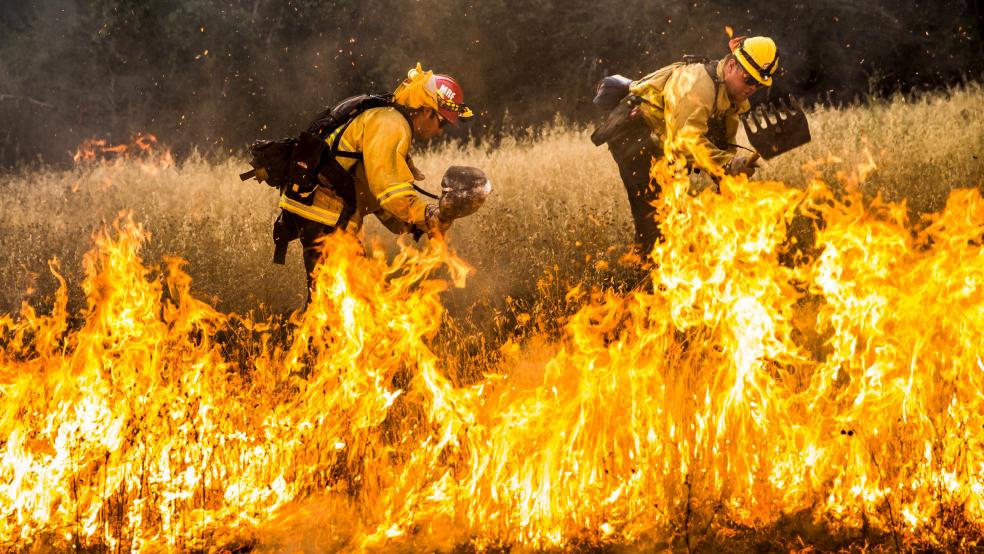While unveiling his proposal for reducing power plant carbon emissions this week, President Obama warned that, left unabated, global warming will carry huge costs as the government copes with catastrophic weather conditions, drought and wildfires.
The U.S. Forest Service released a report on Wednesday that provided one very tangible example of what those costs will be. With more than a dozen wildfires wreaking havoc in California alone, the Forest Service revealed that more than half of its operating budget – or roughly $1.2 billion – is going toward fighting fires. And unless Congress steps in to alter funding patterns, the agency will be devoting 67 percent or more of its budget to fighting fires by 2025.
Related: Crews begin to gain ground against northern California wildfire
As the Forest Service faces higher fire-related costs, other mission-critical programs that can help prevent fires in the first place -- such as forest restoration and watershed and landscape management – will likely see steep cuts.
Agriculture Secretary Tom Vilsack, who oversees the Forest Service, warned in a statement that the government is at a spending “tipping point” in suppressing forest fires. He recommended that Congress begin treating fires more like hurricanes, floods and other natural disasters that typically attract far more government resources.
Due to climate change, fire seasons are on average 78 days longer than they were during the 1970s, according to the new report. And since 2000, at least 10 states including California and Washington have had their largest fires on record. Commercial and residential encroachment near national forests boundaries have also driven up the government’s costs, as more than 46 million homes and more than 70,000 communities are at risk from wildfire.
"Climate change and other factors are causing the cost of fighting fires to rise every year," Vilsack said "but the way we fund our Forest Service hasn't changed in generations. Meanwhile, everything else suffers, from the very restoration projects that have been proven to reduce the risk of catastrophic wildfires in the future, to watershed projects that protect drinking water for one in five Americans, to recreation projects that support thousands of jobs and billions of dollars of economic activity.”
Related: Billions in Unfinished Business as Congress Heads Out for Vacation
“The time has come for Congress to change the way it funds the Forest Service,” he added.
Here is a chart showing projected growth of the 10-year average cost of fire suppression (in $1,000s) through 2025




